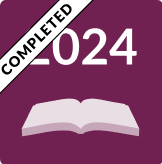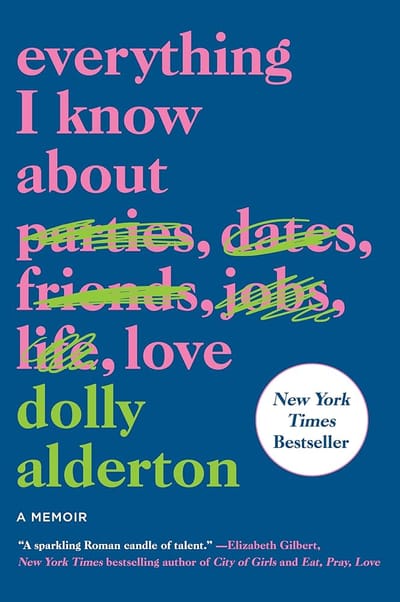The Picture of Dorian Gray by Oscar Wilde - Book Review

⛰ What It's About (No Spoilers)
Dorian Gray, a wealthy, attractive young man, sits for Basil Hallward, a painter. Dorian meets Basil’s friend, Lord Henry, an aristocrat that ponders philosophical questions. Lord Henry convinces Dorian of how enviable youth is, and Dorian despises the portrait that Basil painted of him, representing unwavering youth. Dorian sets out for a life of pleasure with his newfound friend and Basil as his painting watches in the background.
🔍 How I Discovered It
One of my friends who reads many books gave me this for my birthday. I was hesitant to read it because it’s a classic, but it didn’t disappoint.
Star Rating
★★★★★
🧠 Thoughts (Spoilers)
Lord Henry’s philosophical inquiries are intriguing. From the beginning of the book, I thought the story would follow Basil around as its main character, but that obviously wasn’t true. Lord Henry seems like a teenager with a hot take on life, represented by his constant pursuit of pleasure, regardless of whom it hurts.
When Dorian meets Sibyl, I thought they’d live happily ever after—they’re both attractive people who seem devoutly in love with one another. I was shocked when Dorian felt repulsed by Sibyl’s lousy performance in her play. After all, Sibyl was enamored by Dorian and couldn’t keep her mind off of him. To me, it’s a romantic expression of love. To Dorian, “It was simply bad art. She was a complete failure.” That was shocking, seeing as Dorian seemed so pure up until this moment. It’s only after he saw his portrait and its odd leer that he gave mercy to Sibyl, but it’s too late—she committed suicide.
Even worse, Dorian proclaimed her death was “[...] simply like a wonderful ending to a wonderful play.” I understand that he was influenced by Lord Henry, but that’s a horrid thought. It’s understandable if he wasn’t too disturbed by her death, seeing as they barely met, but the fact that he enjoyed it—disgusting.
Okay, so Dorian sets out to seek more pleasure. We’re not told what he does—the book skips a good decade of his life—but it’s obvious by the rumors about him that he’s become a menace. The painting continues to haunt him, representing all of his sins as if God were torturing his sanity. When Basil comes to confront him about the rumors, I thought Dorian would convince Basil that they were false. Even I believed that they were wrong. Rumors do spread easily after all. It was unexpected, though, for Dorian to kill Basil after showing him the corrupted portrait. That was very shocking. And it’s so messed up for him to ask Alan (a past friend? The book isn’t clear on this part.) to burn the body. That must’ve killed him. Literally. Because he committed suicide a while after.
Finally, his misdeeds catch up to him when he encounters Sibyl’s brother on a search for opioids to cure his soul (yeah, I don’t know what he was thinking either). I loved that part! It was such an unexpected turn to see Sibyl’s brother come back for revenge. At this point, I had forgotten his relationship with Sibyl. Frustratingly, Dorian’s young face convinces her brother that he’s not the one that caused Sibyl’s suicide. I lost so much hope at this part. I just wanted Dorian to die (although I don’t condone death as a consequence of anything, it’s fictional, so moral judgments don’t apply). That hope is renewed when another woman tells Sibyl’s brother of Dorian’s true identity, her sister’s killer, but then he’s accidentally shot by a hunting party! Gah!
Then, Dorian talks to Lord Henry about being “good.” Of course, Henry gives his hot take on how being good is boring and whatnot. It’s cool to see Dorian earnestly try to convince Henry that he is good, mirroring him trying to convince himself that he truly is “good” now. He gets fed up with it, goes to the painting, which he blames as the source for all of his problems, and stabs it in the heart. Instead of damaging the painting, Dorian kills himself. His servants find a knife in his heart after hearing a loud crash, and the disfigured painting is freed of Dorian’s sins, mocking Dorian’s dead body.
The ending is very symbolic. “It was not till [the servants] had examined the rings that they recognized who it was.” With the painting being the “actual” Dorian, it’s great to see the juxtaposition of the façade everyone thought he was (the painting in the end) with his real character (Dorian’s corpse). It’s as if the portrait got the last laugh.
Looking at the book as a whole, it serves as a critique of seeking purely pleasure or that which is unobtainable. Dorian knew from the beginning that youth was temporary. Yet, he wished he would forever retain it, and when he did, exploited it. Youth can be substituted for any other interim state. Regardless, we have to accept time and finitude, for we cannot change the laws of nature.
Also, Dorian’s treatment of everyone as dispensable serves as a lesson. If he weren’t as shallow-minded in his thoughts or intentions, Sibyl wouldn’t have committed suicide, he wouldn’t have killed Basil, and he wouldn’t have killed himself. The constant disregard for others created his own demise, even if it worked in the short term.
All of the action pilled up at the end, and multiple plot twists were released in succession. The beginning was kind of boring, but the middle and ending changed my mind about the book. From the classics I’ve read so far (this and the Great Gatsby), I’d definitely say the Picture of Dorian Gray is the book to get people into classics.
🥰 Who Would Like It?
If you like philosophy or thinking about the meaning of life, you’ll enjoy this book. If you like classics, you’ll enjoy this book.
No spam, no sharing to third party. Only you and me.







Member discussion